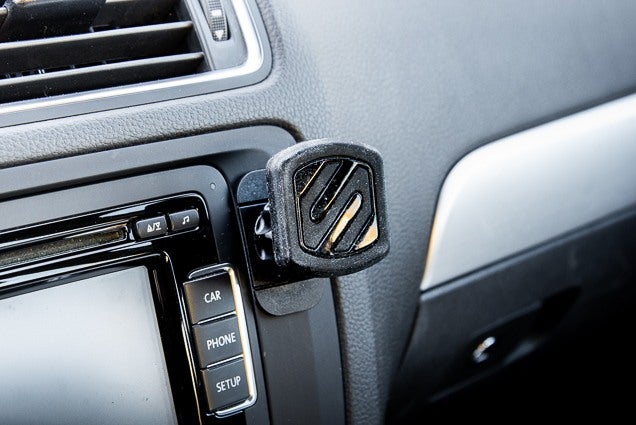
If you're interested in electric vehicles, you've probably wondered which ones have the best value for money. You should look at the following models: Nissan Leaf (Hyundai Kona Electric), Chevrolet Bolt EUV (Ford Mustang Mach-E), and Chevrolet Bolt EUV (for Ford Mustang Mach-E). Each one has its own merits. Let's take a closer look at each model. What makes these vehicles stand out? What makes these vehicles stand out? And how can you choose the best one for you? Keep reading to find out how you can choose the best one!
Nissan Leaf
The Nissan Leaf, an electric car that can go up to 150 mph on one charge, is an outstanding choice. The 62-kWh Leaf is available in S and SV Plus trims. It has a range of 226 miles. Simply plug the Leaf into a 120-volt power outlet to charge it. You can also charge your car at public charging stations that are available in most parking lots, gas stations and rest stops.

Hyundai Kona Electric
For those who want an affordable electric car, the Hyundai Kona Elektro is a great option. The range of the HyundaiKona Electric is 258 miles according to the EPA. The car is also reasonably priced at $136 per kilometer after taking advantage of the federal tax credit. In fact, Kona Electric is among the most affordable BEVs. It boasts a 10-year-old battery and a range 258 miles.
Chevrolet Bolt EUV
The 2022 Chevrolet Bolt EUV sports car can reach a top speed at 247 mph. It has a super cruise control system, which makes it almost autonomous and can be used on more than 200,000 miles of North American roads. Bolt's lithium-ion battery can provide power for the vehicle for as long as 247 miles. The Bolt also has many charging options such public DC fast chargers or home charging stations. Chevrolet will pay the cost of installing a level-2 home charger for all eligible owners.
Ford Mustang Mach-E
The 2021 Ford Mustang Mach-E electrical car features a 15.5-inch display, six-speaker system, navigational, wireless device charging and satellite radio. It also includes two USB ports. With the exception of the Cold Weather Package, all standard features in the Mustang Mach-E remain the same as on the base model. The standard Mustang Mach-E comes in at $49,000. It offers a range between 224 and 225 miles. For an additional $1195, customers can upgrade to the extended-range Mustang Mach-E. The standard battery pack can extend to 303 miles and features California Route 1 features. 19-inch wheels are also available.

Hyundai Ioniq 5
The Hyundai Ioniq 5 electric car value will depend on its trim level. The SE model costs $44,925 while the Limited model is $51,825. It has a dual motor AWD setup. The SE version will go on sale this month, while the Limited will arrive in the spring. Both models come with electric power, while the SE is less powerful. Its price is likely to increase as more people start to test drive them.
FAQ
What length is an automotive course?
An automotive course lasts for three years.
The first year is dedicated to theory and learning about cars. The second year will be spent in practical training. Here you will learn how fix engines, drive and other mechanic jobs. The final year includes a placement at an auto shop. This gives you real-world experience fixing real problems.
Is it really worth becoming a mechanic.
The answer depends on what you are looking for in life. If money is your goal, then you can answer "yes". But if you are searching for meaning and purpose, then you should not answer this question.
If you don’t have any mechanical skills, it’s pointless to get into it. It will just waste your time. It's not going to make you rich. It will not make you famous. And it's unlikely to change your life.
You'd have to spend years learning how things work. You would still need to hire someone to fix your car if it breaks down. It's the reason most people don't bother. They find something better to do instead.
In conclusion, if money is your main goal, you should go ahead. You can't live a meaningful existence if your goal is to make a living in the mechanic's business.
Is it easy to get a job as an automotive mechanic?
It is possible. Many garages have vacancies that are advertised online. Many people apply because they think it will be fun. Try applying to a few jobs and seeing if the garages accept student applications. Ask your friends and family to recommend anyone in the field. You might be able to refer someone.
To work as an automotive mechanic, do I need a degree? Do I have to study part-time?
A degree isn't necessary, but it certainly helps. Employers prefer candidates who have completed a full degree. It shows that you've worked hard and are determined to succeed.
However, it doesn't mean you can't still work while studying. Some universities allow students the flexibility to finish coursework during summer vacations and resume their studies later in year. Others allow students to study part-time all year.
Statistics
- The U.S. Bureau of Labor Statistics (BLS) reports that the job outlook for automotive service technicians and mechanics is expected to decline by 4% from 2019 to 2029. (indeed.com)
- According to the BLS, the median annual salary for automotive service technicians and mechanics in the United States was $44,050 in May 2020. (uti.edu)
- According to the BLS, total auto technician employment is expected to exceed 705,000 by 2030. (uti.edu)
External Links
How To
How to properly diagnose your vehicle for repair
Before you can determine if your car requires repairs, it's important to first analyze the symptoms. These steps will help you diagnose your car properly.
-
Check engine lights. Check the dashboard light indicators such as the engine light indicator, the oil pressure gauge, the battery light indicator, the coolant temperature gauge, and the RPM gauge. If any of them have been flashing for several days, it may mean something is wrong with your vehicle.
-
Take a look at the treads. Tires with worn treads could cause problems when handling or braking. The treads of the wheels should be inspected as well. They should be clean, and they should be smooth. It is best to take off the wheels and remove them. Use a flashlight to see how well the treads are worn.
-
You should always monitor the level brake fluid. It is important to keep track of how much brake fluid you have in your car. This helps ensure that your brakes operate properly. Low brake fluid levels can cause brake failure when you apply pressure.
-
You should test the suspension system. Vehicles usually have a suspension system that helps absorb shocks and vibrations while driving. It allows for better control, smooth acceleration, and deceleration. Your vehicle might feel wobbly, or shake uncontrollably if it has a bad suspension. Try putting some weight on your front or rear axle to determine if you have a suspension problem.
-
Examine the steering wheel. The steering column connects the steering wheel to all other components of the vehicle. Many accidents can cause damage to steering columns. You should replace your steering column if it feels loose or unstable.
-
Observe the exhaust pipes. The exhaust pipes transport gases from the combustion chamber to outside. You can let harmful fumes into your home if your exhaust pipes crack or leak. Additionally, your tailpipe should be fixed immediately if it is bent.
-
Check under the hood. Check under your hood for any unusual or missing components. Leakage of fluids in your engine could indicate that it is leaking. A professional technician should be contacted if your engine compartment emits an unusual smell.
-
You should inspect your air filter. Your vehicle's air filter collects dust and debris from the outside environment. Vehicles that have a dirty air filter will not run well. Replace your air filter regularly.
-
The fan belt should be checked. Your vehicle's fanbel connects the engine and transmission. If the fan belt fails, the engine won't start. It's easy to replace the belt. All you need are a screwdriver & pliers.
-
The radiator hose and hoses should be checked. The radiator hose transports water from radiator to engine. It can cause hot liquid to leak onto the engine if it is damaged or cracked. To repair the leaky hose, all you need is a pair if needle-nosepliers.
-
You should inspect the windshield wipers. Windshield wipers use electricity to clean away snow and rain. If they stop functioning, they can leave streaks in your window glass. Simply change the washer oil to fix the problem.
-
Verify the condition of your battery cables. The battery cables provide power for the electrical systems in your car. Make sure you disconnect the negative cable before replacing batteries. Failure to do so can damage your alternator.
-
Check the headlights. The headlights will illuminate the road ahead. Bad visibility can be caused by headlights that don't work correctly. To determine if your bulbs are out of date, check them.
-
Be sure to check the lights. If you approach other drivers at night, lights will warn them. You may be distracted by the light and end up in an accident.
-
You should inspect your brakes. Before you have a collision, brakes slow down your car. You could lose control of the car and cause a crash if they don't work properly.
-
Change the oil. Keep your engine lubricated with oil. It protects metal parts and prevents them from wearing too quickly. It is recommended that the oil be changed every other month.